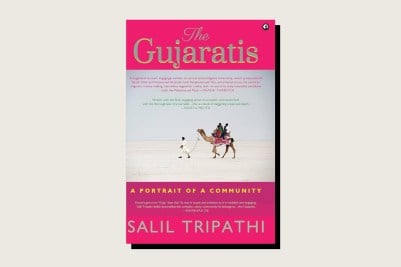Sometime in 2014, the Indian writer V. Gangadhar was at the crowded Kuwait Airways counter at New York’s John F. Kennedy International Airport, annoyed that his flight to Mumbai was canceled. Tempers were short. Gangadhar was tired and diabetic. His wife was anxious. He needed to eat, but the cafe was some distance away. Suddenly, a woman turned up and offered him masala puri, chutneys, and biscuits.
She was Gujarati. “I heard you talking,” she said. “We have diabetics in our family,” and smiled.
Gangadhar later wrote: “I was not surprised at her kindness to a stranger—during my long years in Gujarat I have experienced this sort of warm consideration for others.” He recalled Gujarati kitchens preparing food for the drought-affected, even feeding starving cattle.
You don’t have to look far to witness Gujarati generosity. Take any Indian train journey, with its erratic schedules, unscheduled stops, noisy passengers, and endless rounds of tone-deaf Bollywood singing—but if you’re lucky, you will have Gujarati passengers traveling with you.
Once the train leaves Mumbai Central, heading north, and reaches Palghar, Gujaratis will open their round steel boxes and bring out delicious, crisp khakhras (hard-flattened chapattis) or theplas (the limper version spiced with fenugreek), served with chhundo, the grated mango pickle that can be hot and sweet at the same time. There might be salty ganthia, the specialty of Bhavnagar, and far tastier than Mexican nachos. And there will always be a thermos of sweetened masala chai, with ginger and cardamom.
“We are a giving people,” veteran Gujarati columnist Gunvant Shah told me at his home in Vadodara, while he insisted I have another helping of dhokla, the velvety soft, steamed slices from fermented rice batter that his wife had made. That afternoon, we also had gol-papdi, the deliciously sweet cake made of jaggery. “Gujarati families on a train journey are godsend because we always offer our food to our neighbors,” Shah said. “We share our food with everybody.”
But what he didn’t add is that some Gujaratis won’t eat others’ food, and—more ominously—might seek to prevent strangers from eating their own food if it’s something Gujaratis don’t approve of.
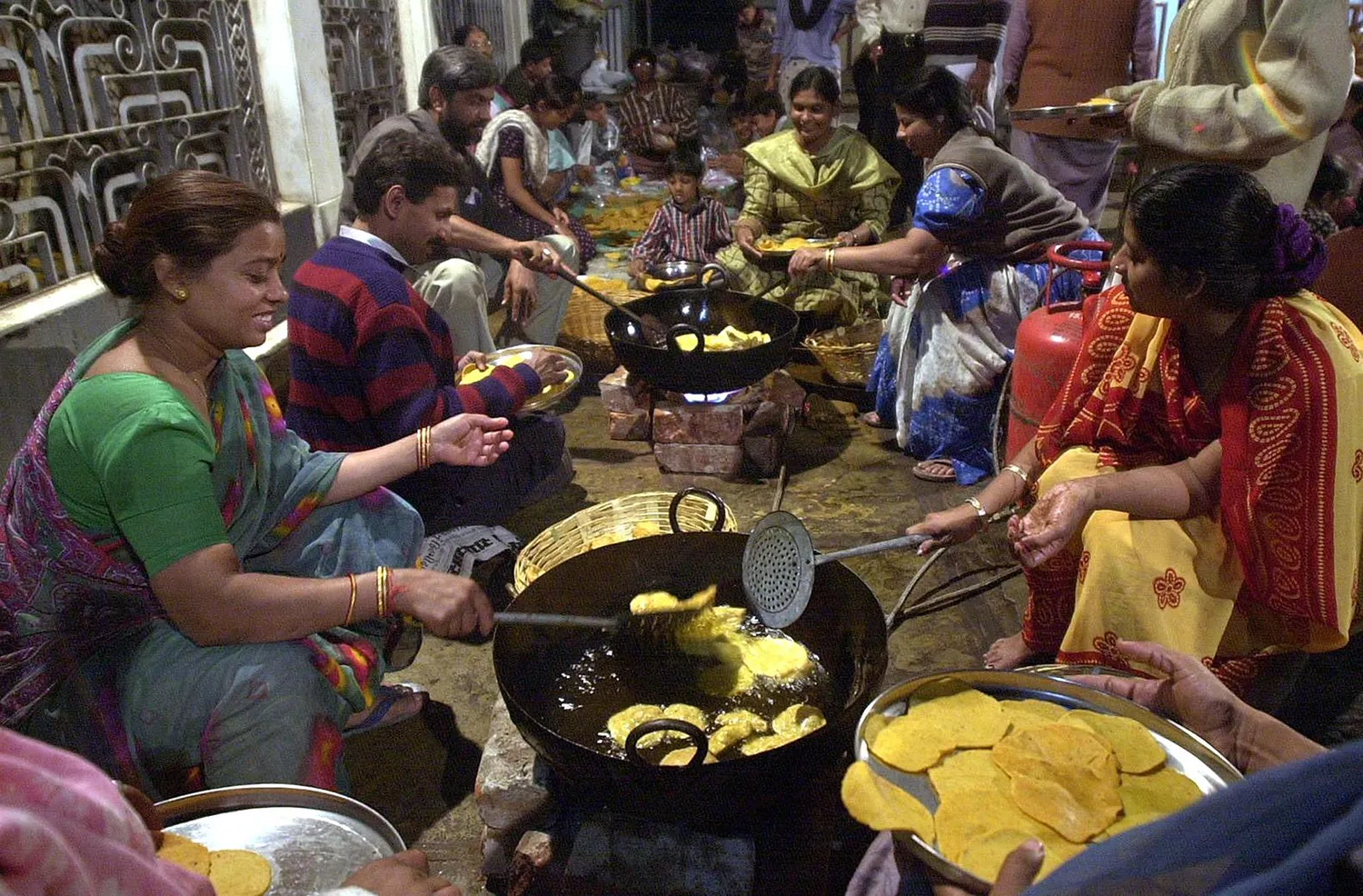
The Delhi-based academic Rita Kothari agrees that Gujaratis are generous with their food. “But,” she noted, “there are two stages that follow which you mustn’t forget. They then require others to eat similar food. And then there is the third stage, where they expect compliance. In other words: ‘You must eat like us.’”
We appropriate food and replicate it, and we then demand what’s not available elsewhere. We travel to Denmark and demand dhokla; go to Paris and insist on patra; we go to Rome and want ras-puri. We travel with our cooks and theplas are our constant companions.
The wealth of the Gujarati community has bolstered its assertiveness, which borders on arrogance. And that assertiveness is wielded to impose vegetarianism on those who may prefer to eat meat. Although not every Gujarati is vegetarian, the dominant castes—Brahmins in particular, but also the numerically small but economically influential Jains—have flaunted their intolerance.
They have imposed strict rules in their communities about who can eat and cook what, and, more importantly, what kind of food they can order in from delivery companies. There have been cases of meat-eaters being hounded, motor scooter tires deflated, and the food checked before the courier is allowed in. More dangerously, cow-protecting vigilantes have beaten up people suspected of dealing with animal products.
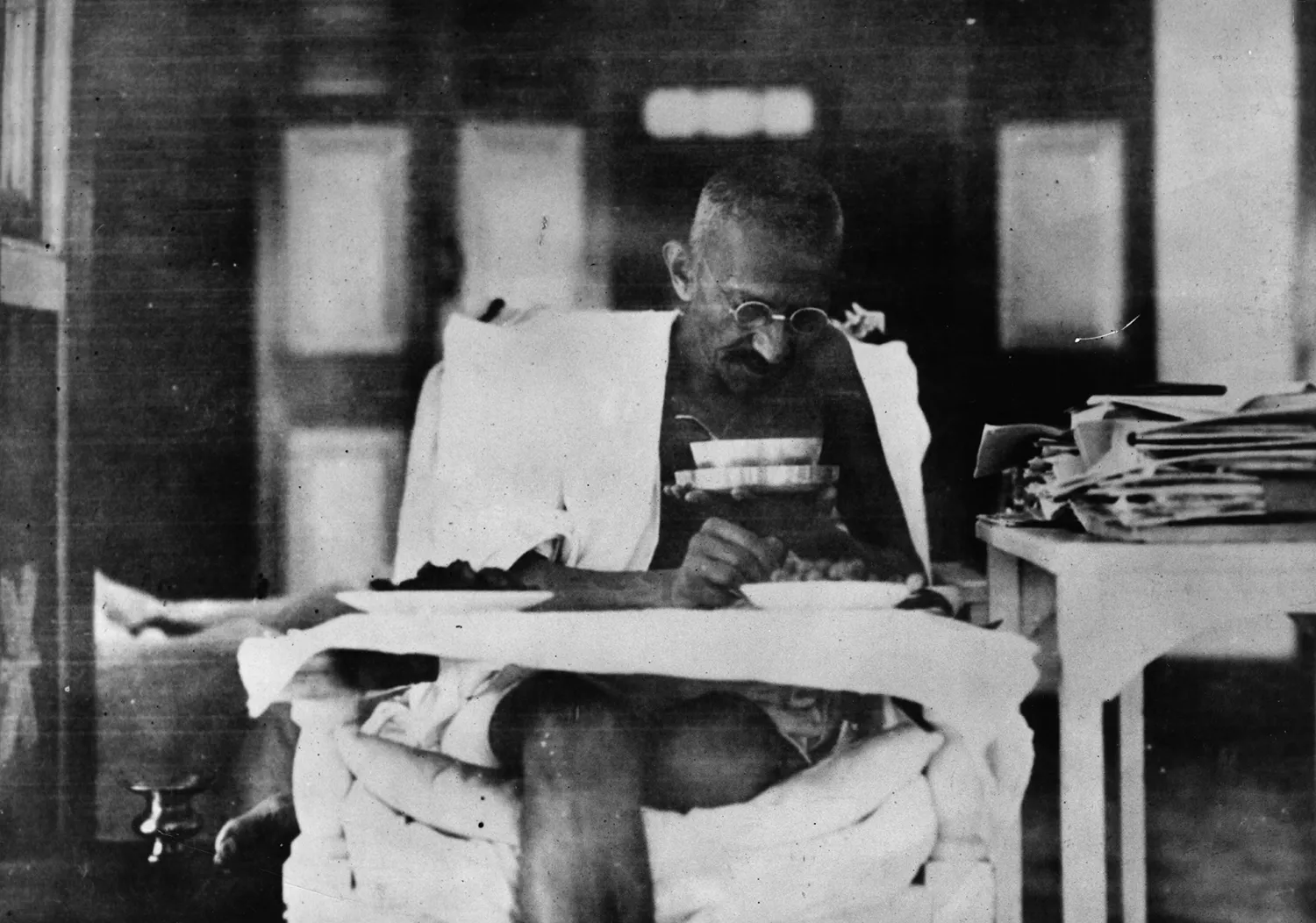
There is no single, binding prohibition on meat eating in Hinduism. While certain castes and sects describe themselves as “strictly” or “pure” vegetarian, many Hindus eat meats of various types. The enduring myth that all Gujaratis are vegetarian is a stereotype that took hold first because of the power of Jain kings and ministers and later, because of the influence of Mohandas Gandhi, India’s founding father.
Gandhi believed in vegetarianism, and he sought to persuade meat-eaters to give up meat. Gandhi’s vegetarianism came out of the idea of ahimsa, which prohibited killing. His argument was ethical, not self-righteous. “The only method I know of protecting the cow is that I should approach my Mahomedan brother and urge him for the sake of the country to join me in protecting her. It is not religion, but want of it, to kill a Muslim brother in order to save a cow,” Gandhi wrote.
Today’s Hindu nationalist Gujaratis believe in using force. A Human Rights Watch report from 2019 found that, between 2015 and 2018, at least 44 people, 36 of them Muslim, were killed by vigilante cow defenders across India. In Gujarat, there was one known instance of killing and at least nine serious injuries. In 2017, Gujarat also passed one of the stiffest laws in India to protect cows by increasing punishments, and Pradeepsinh Jadeja, then minister for home affairs, said, “We have equaled the killing of a cow or cow progeny with the killing of a human being.”
Gujaratis do eat meat; they just don’t speak about it openly. According to the Indian government, some 40 percent of Gujaratis regularly eat meat, and there may be more who conceal their carnivorous consumption. (With its 1,000-mile coastline—the longest of any Indian state—and hundreds of thousands of people engaged in fisheries, Gujarat has a thriving seafood business.)
Nearly 7 percent of Gujarat’s population is Dalit and some 15 percent are from Scheduled Tribes. Then there are Christians who form about 0.5 percent, and another 10 percent are Muslim. It is extravagant to claim that the remaining two-thirds of Gujaratis are vegetarian.
But the strong opposition to meat-eating compels meat-eaters to do it quietly. The hegemony of Jain and dominant-caste Hindu perspectives imposes silence, creating an illusion of majority and conformity. In fact, while Jains are dominant politically and financially, they form only 1 percent of Gujarat’s population, according to the last Indian census (in 2011).
Narendra Modi’s Hindu nationalist Bharatiya Janata Party has now ruled Gujarat almost uninterrupted since 1995 (with Modi himself being the chief minister from 2001 to 2014, before he became prime minister) and that continuous rule has solidified the assertiveness of vegetarians, making it difficult for restaurants to serve meat in many areas.
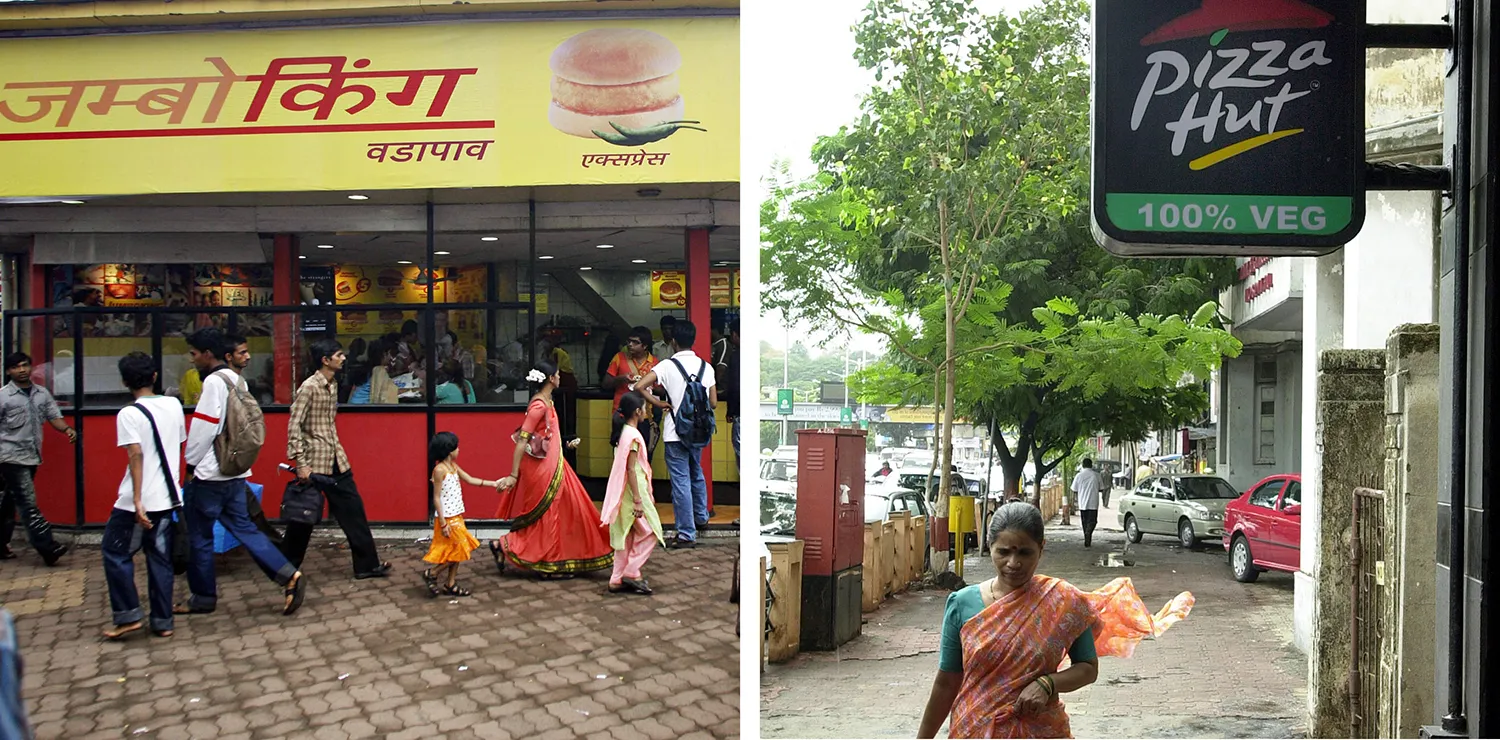
Even outside Gujarat, the power and influence of wealthy vegetarians remains. Gujaratis have been an important wealth-generating community in Mumbai—a polyglot, cosmopolitan city. Many Gujarati Jains live in the posh Walkeshwar area of south Mumbai, in co-op buildings overlooking Marine Drive.
Anyone suspected to be a meat-eater would find it harder to buy or rent in these buildings, which passed bylaws first banning the cooking of meat, then even the consumption of it. Nearby shops selling eggs found Gujarati customers turning away from them, so eggs were removed from shelves. Restaurants stopped serving meat, and food delivery companies would not deliver meat dishes to apartments in certain areas.
Prominent Gujaratis in India’s film industry have depicted these dynamics on the screen.
The filmmaker Paromita Vohra, who is part Gujarati, made a short film in 2004 called Cosmopolis: Two Tales of a City, which captured the emerging intolerance of meat. In the film, Sucheta Telang, a Marathi woman, explained the city’s welcoming nature: “Anyone who comes to Bombay, immediately the person is accepted. We never feel that he is an outsider.”
But the film then shows the cultural clash that began when new Gujarati neighbors moved in. They told the fishmonger not to come to the building anymore. Of the 70 flats in her apartment building, now meat delivery has stopped and cooking meat has virtually vanished. In some buildings, security guards and even residents check the garbage of their neighbors for bones.
What gives vegetarian Gujaratis the confidence to outlaw meat-eating from a building is the power that money brings. As the actor Ratna Pathak-Shah seethed with anger when we discussed food. “We wear vegetarianism on our sleeves but this has become vegetarian fascism,” she said.
The pressure within Gujarat is even greater. For decades, the Bengal Cultural Association in Ahmedabad, the largest city in the state, had celebrated Durga Puja with a Bengali feast including Mughlai paratha, chicken rolls, prawn pakoda, mutton biryani, and chicken chaap. But in 2018, the festival was forced to go vegetarian after the owners of the venue told them to stop serving meat.
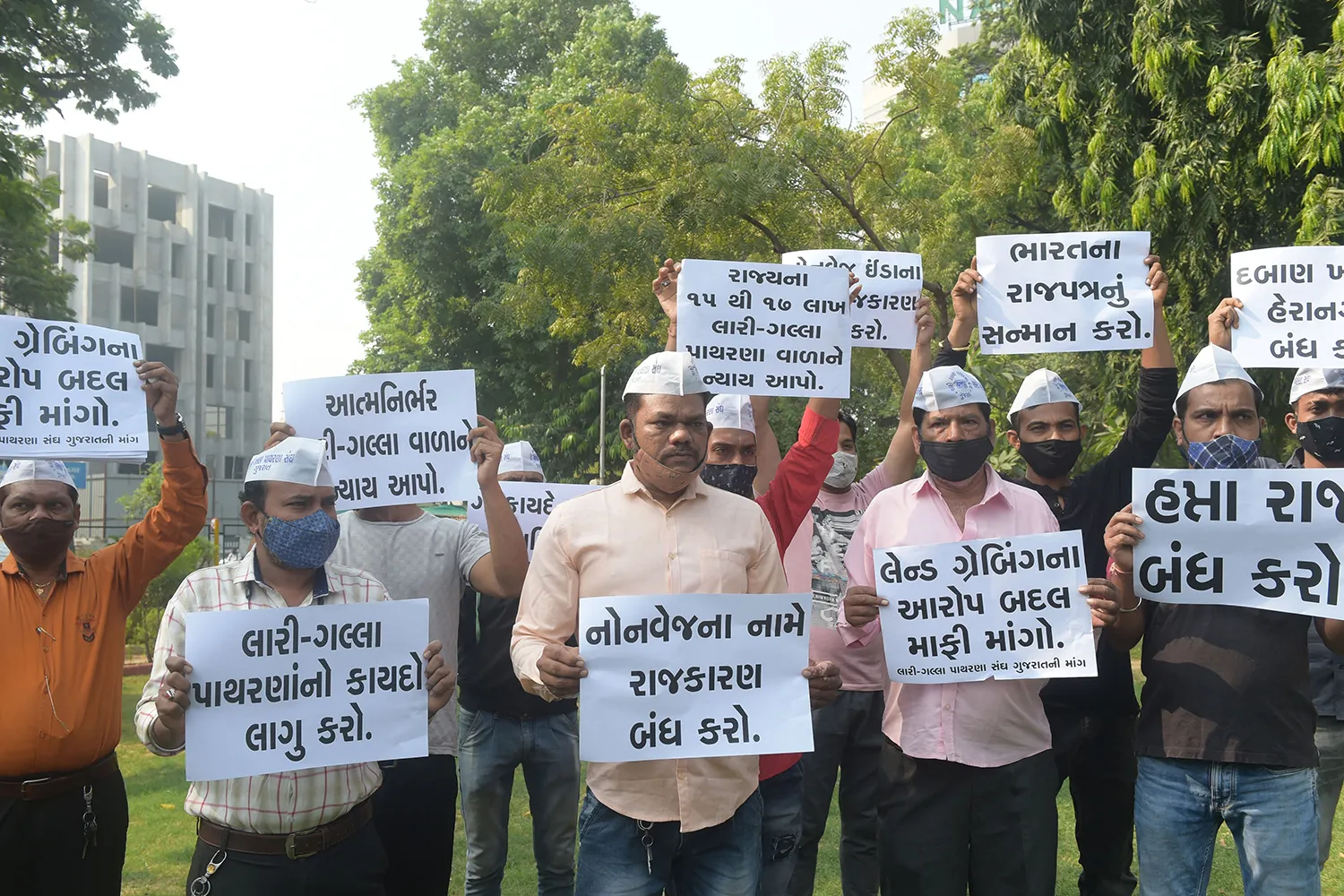
The Gujarati disgust towards meat eating is deep-rooted and stoked continuously by political and religious leaders. “Maas khane wale logon ka vyavahar alag hota hai” or, “those who eat meat act differently,” Modi told a journalist in the 1990s.
Hindu stereotyping of Muslims based on their dietary preferences and practices like animal sacrifice have aroused disgust towards Muslims which, combined with moral indignation, leads to marginalization, stigmatization, dehumanization, and ultimately, violence. As Parvis Ghassem-Fachandi, an anthropologist who teaches at Rutgers University, writes, “Contemporary vegetarianism in Gujarat is defined in its relation to disgust, anger and national identification.”
There are also influential booklets like Vegetarian or Non-Vegetarian: Choose Yourself, by Gopinath Aggarwal, available widely in Ahmedabad. The book offers a grab bag of arguments justifying vegetarianism—there is nutritional and financial analysis, health hazards, and moral and spiritual arguments. And then there is a section purporting to be an autobiography of a slaughtered goat. That story begins harmlessly; humans treat the goat affectionately after he is born, giving him tender leaves to eat, petting him gently. When the goat gets older, he is taken away with 50 other goats in a van. When they stop, “a tall, bearded man” takes them away.
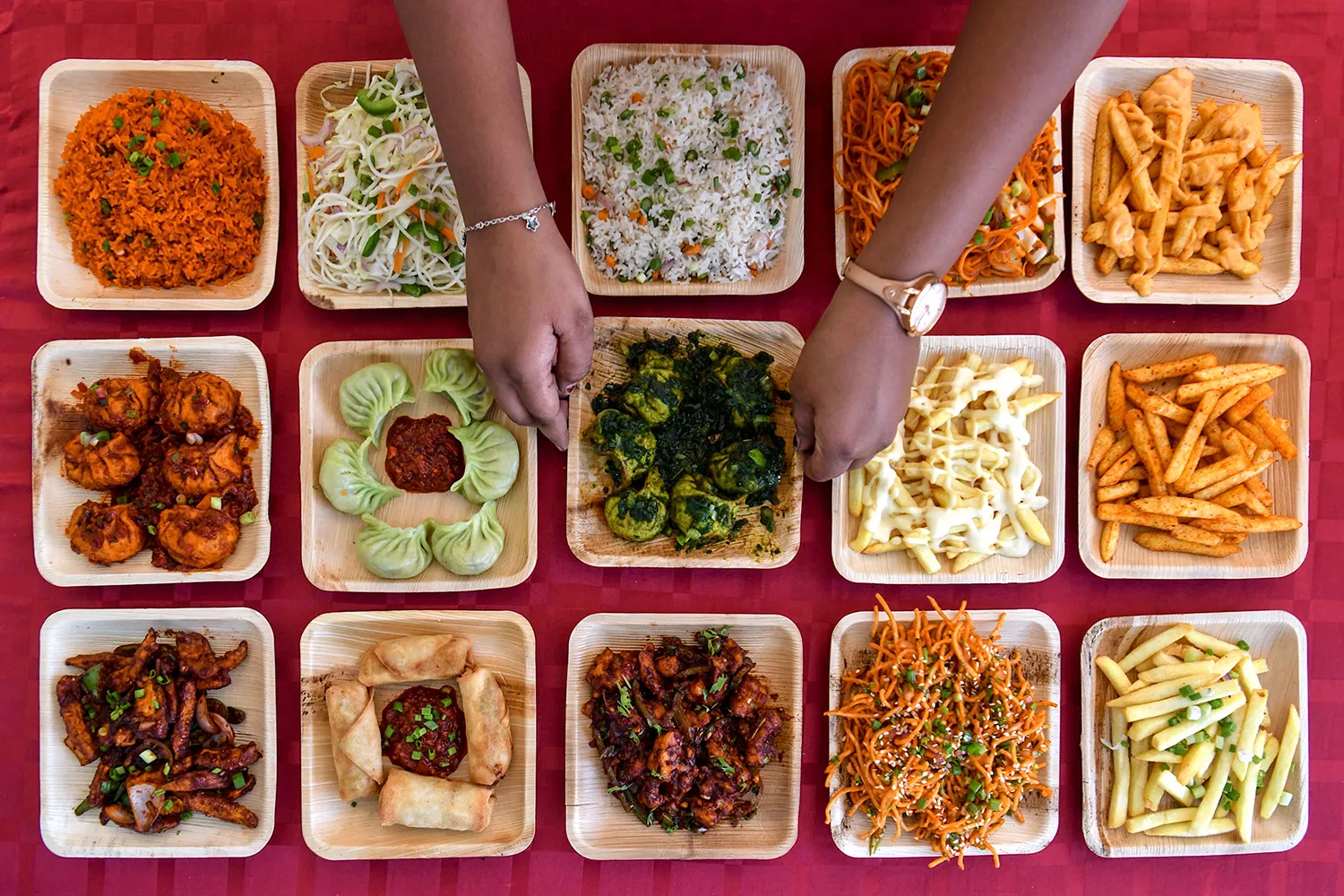
There is not much subtlety; the man committing the slaughter of the goat is described such that he could only be a Muslim. By depicting animal slaughter as a Muslim practice and considering it impure, this parable reinforces the demonization of Muslims.
The story has practical consequences.
Many parts of India prevent the sale of meat during periods when there are Hindu or Jain festivals. Some states have passed laws under the excuse of improving hygienic conditions, so that animal slaughter and sale of meat products is more stringently regulated, especially near Hindu temples.
In some states, vendors or cafes are required to state the owners’ names, presumably so that non-Muslim customers can avoid patronizing Muslim shops or restaurants.
Friendly Gujaratis may continue to offer other passengers their delectable snacks and food. But they won’t eat their neighbors’ food. And they will expect others to conform, imposing vegetarianism, turning food into a manifestation of political hegemony.
The post When Vegetarians Become Vigilantes appeared first on Foreign Policy.

